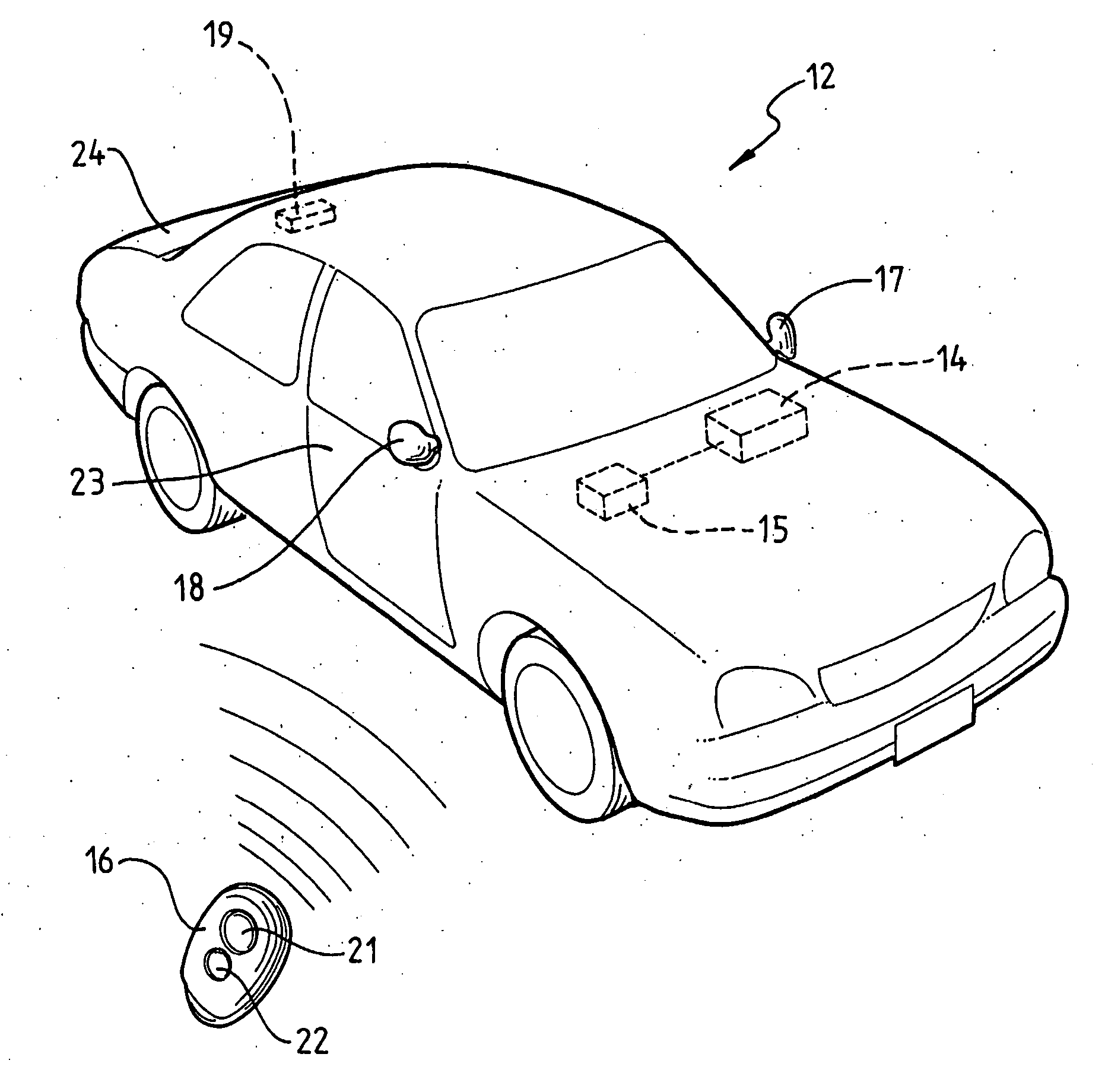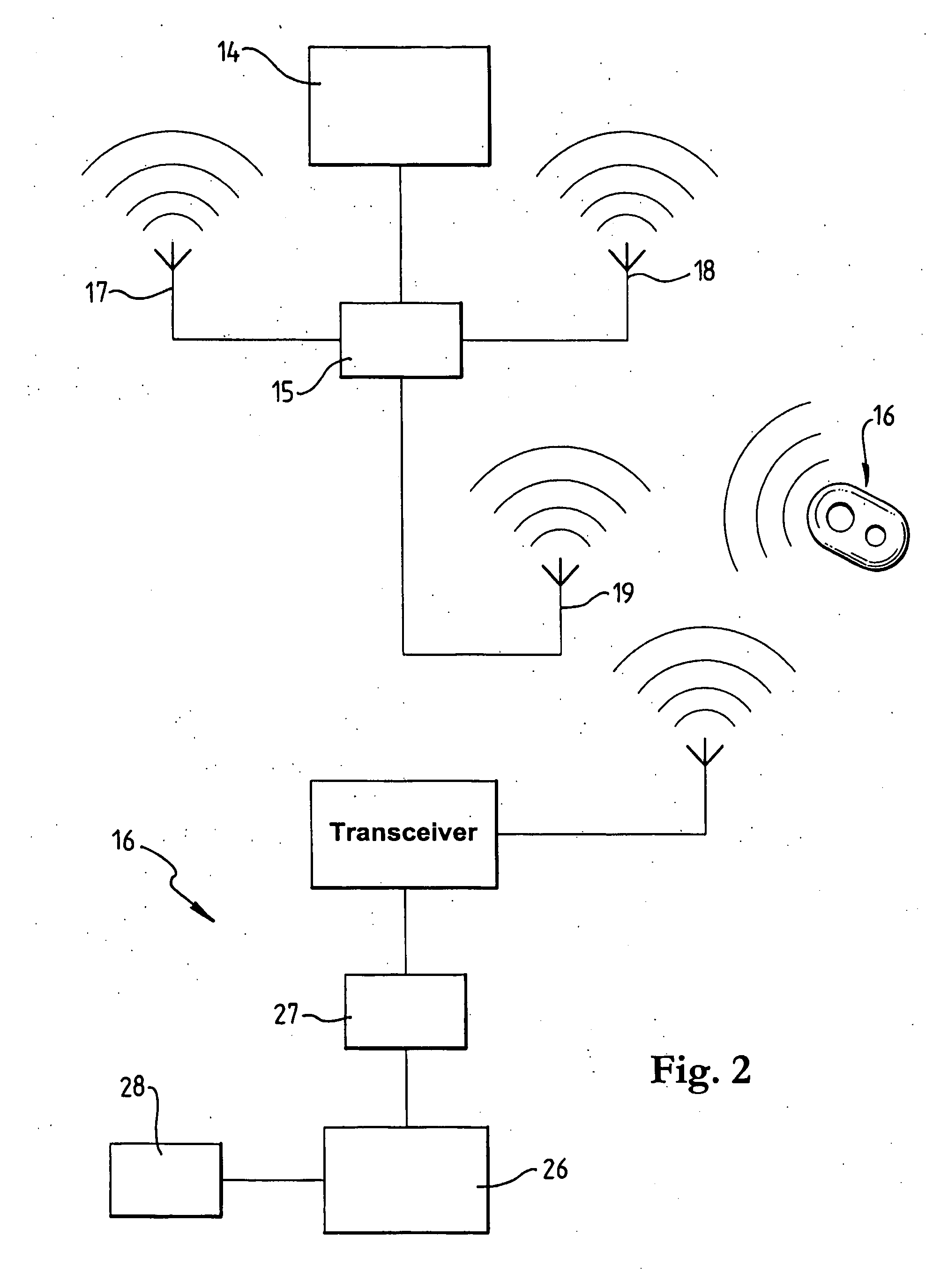Bi-Directional Radio Monitoring System
a radio monitoring and bi-directional technology, applied in the field of radio monitoring systems, can solve the problems of long delay, inability to recognise and identify the correct individual identification signal, and inability to achieve the effect of reducing unnecessary power consumption, reducing the frequency of access devices polling transmissions, and eliminating reception nulls
- Summary
- Abstract
- Description
- Claims
- Application Information
AI Technical Summary
Benefits of technology
Problems solved by technology
Method used
Image
Examples
Embodiment Construction
[0044] Referring to FIGS. 1 and 2 , this embodiment of the invention will be described with reference to its use in relation to a motor vehicle 12. The vehicle has a base controller 14 which controls a high date rate, bidirectional wireless transmitter / receiver (transceiver) 15, which provides RF communications with one or more portable access devices 16. The portable access devices 16 each incorporate a transceiver, and they are also provided, in this preferred embodiment, with pushbuttons 21 and 22 which, on actuation, initiate RF signal generation which, on authentication, cause the base controller to lock or unlock a vehicle door 23 or boot (trunk) lid 24, in a known manner. Thus, the portable access device 16 enables remote keyless entry and locking of the vehicle 12.
[0045] The transceiver 15 in the vehicle 12 communicates with the transceiver in the access device 16 through at least two, and preferably three antennae which form fixed references. One antenna is located in the ...
PUM
 Login to View More
Login to View More Abstract
Description
Claims
Application Information
 Login to View More
Login to View More - R&D
- Intellectual Property
- Life Sciences
- Materials
- Tech Scout
- Unparalleled Data Quality
- Higher Quality Content
- 60% Fewer Hallucinations
Browse by: Latest US Patents, China's latest patents, Technical Efficacy Thesaurus, Application Domain, Technology Topic, Popular Technical Reports.
© 2025 PatSnap. All rights reserved.Legal|Privacy policy|Modern Slavery Act Transparency Statement|Sitemap|About US| Contact US: help@patsnap.com



